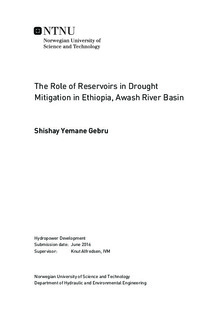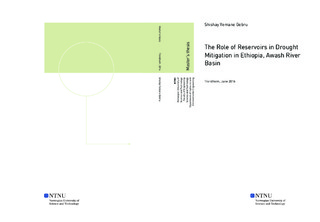| dc.description.abstract | Drought is weather related natural hazard that can affect a particular region or entire country. It affects the lives of people, livestock, and economic development of a given region or country. In Ethiopia it is becoming a recurrent phenomenon which usually is caused due to lack of precipitation for an extended period. This extended lack of precipitation causes water shortage of different demand sectors of a given community. As majority of the food production in Ethiopia is dependent on rain-fed agriculture the impact is much worse. It often turns into famine and food crisis. Hence, This thesis work aims in analysing drought and its mitigation measures in Awash river basin. Detail drought assessment is performed on a sub basin level. Standardized precipitation index and standardized stream flow index are used to characterize meteorological and hydrological droughts of the basin respectively. A good relationship is found between meteorological and hydrological droughts based on shorter time scale of drought index calculation. Drought severity maps are developed using Arc view to have an over view of drought affected areas. The lower and middle Awash are found to be hit by extreme and severe drought in a higher percentage. A drought of moderate and mild severity is common across the basin.
Impact of climate change on drought severity in the future is also analysed. The impact is analysed by downscaling historical and future climate data of three RCP scenarios of Moh hadely and MPI climate models by using Arc map and R-programming language. A total of 54 index points are downscaled with in the catchment and average values are used when more than two index points are downscaled per sub basin. It is found that drought severity due to climate change will increase in the future in the upper and middle part of the basin. In the lower part almost same type of drought is found but this is uncertain due to the fact that the correlation of downscaled climate data and observed data is found to be very weak. A WEAP model is also used to analyse the role of reservoirs and integrated water resource management to mitigate drought. A set of future scenarios are tested to identify efficient management options to minimize water deficiency. | |

